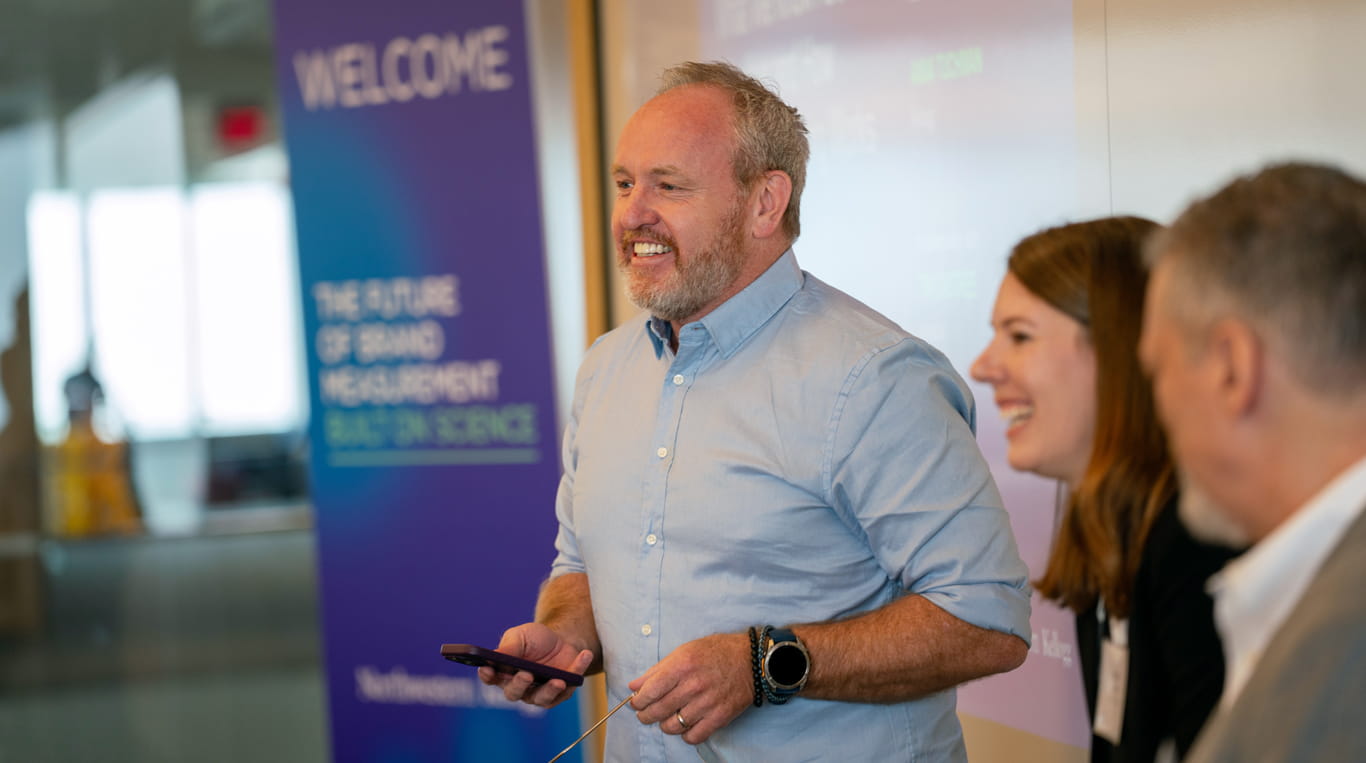Top Insights from the AdTLab Brand Measurement Conference

Brand measurement has long been one of marketing’s most persistent challenges. While performance marketing has benefited from increasingly precise tools and attribution models, brand marketing remains difficult to quantify, especially when its effects are long-term, indirect or emotional.
To tackle this challenge, the Kellogg School of Management’s groundbreaking Ad-Tech Research Lab (AdTLab) and Amazon held a daylong conference this month at the Global Hub with leaders from industry and academia. The day brought together some of the most influential minds in marketing science and practice for a rigorous, high-level exchange of ideas. The goal: to identify what’s working, what’s not and what it will take to build a more actionable and collaborative approach to brand measurement.
“We designed this conference to create space for open, rigorous conversation,” said Professor of Marketing and AdTLab faculty director Florian Zettelmeyer, who was the event’s co-host and is also chief economist for advertising and entertainment at Amazon. “Our goal was to bring together people who are shaping the future of marketing, both in the academy and in the field, and give them a forum to wrestle with the hard questions.”
Participants included faculty from Kellogg and peer institutions, as well as marketing and AI leaders from industries ranging from tech and retail to financial services and manufacturing. Topics included the challenge of defining and quantifying brand impact; the role of experimentation and statistical modeling; and the need to align marketing, finance and analytics teams.
“Brand marketing has always been part art and part science,” said Jim Lecinski, clinical professor of marketing and co-host of the event. “What we’re seeing now is a real appetite to make the science part stronger, without losing the creativity and intuition that make great brands great.”
Here are a few of the biggest takeaways of the conference:
1. Brand measurement is risk management.
Think of brand investment as a risk-adjusted decision. Too much spending on brand-level advertising can waste resources, while not spending enough means opportunities may be left on the table. Creating a structured rubric that details what factors determine the success of a campaign or a specific outcome can help find the sweet spot in the middle of these extremes.
2. Define terms and decision frameworks up front.
Before launching studies, teams should agree on shared definitions and measurement standards, as well as align on how decisions will be made based on the results. Involving peers throughout your company — not just from marketing and data science but also from finance and leadership teams as well — can ensure that studies are designed to deliver actionable, relevant outcomes.
3. Break “the brand” into testable parts.
Rather than trying to measure the impact of the brand as a whole, organizations can identify specific, tangible elements — such as messaging, tone or visual identity — that can be isolated and tested. This allows for more precise evaluation of what’s working and what’s not and helps measurement science contribute meaningfully to brand development.
4. Balance scientific rigor with practical constraints.
Throughout the day, participants returned to the tension between academic standards of certainty and the real-world demands of business decision-making. While researchers often seek airtight experimental designs and peer-reviewed validation, practitioners must act quickly with limited resources and imperfect data. The takeaway: scientists should consider whether their methods are feasible in practice, while marketers should raise their standards and avoid over-relying on weak proxies like brand lift.
5. Industry-standard evidence on brand effectiveness is suspect.
Several participants questioned the validity of widely disseminated academic and practitioner research that tied the ability of broad, awareness-based advertising (like TV commercials) to influence consumer purchasing. However, several marketers present noted that they do see these investments in “brand lift” pay off, albeit over months or years. Both sides agreed that short-term metrics (e.g., purchases in the immediate weeks following an ad campaign) fail to account for how brand advertising can enhance a company’s reputation and increase trust among consumers in the long run, which can be valuable as well.
6. We need to link mental models of how branding works with measurement methodologies.
Academics and measurement experts at companies have very strong measurement skills but often lack an understanding of the mechanisms by which brand marketing affects consumers. Marketing practitioners have strong mental models of brand marketing but lack measurement chops. To make measurement progress, we need to link mental models with measurement approaches.
7. Don’t overlook creative quality.
Often lost in measurement discussions is the creative itself. Even a well-targeted ad won’t perform if its “big idea” is weak. Strong creative can significantly improve outcomes and should be factored into both testing and interpretation.
8. Industry and academia must collaborate.
The gap between researchers and practitioners is holding back progress. Both sides need to understand each other’s constraints — data access, timelines and incentives — and work together not only to define the problems but also provide solutions.
If there was one clear takeaway from the day, it’s that no single group — marketers, scientists or finance leaders — can alone solve the question of how to measure the impact of brand advertising. Progress will require shared language, shared goals and a willingness to experiment, even when the answers are messy or incomplete. The good news? The energy, talent, and commitment in the room made it clear that the future of brand measurement is already being built together.
Interested in learning more about the Kellogg approach to marketing? Learn more about the Ad-Tech Research Lab, explore the latest faculty research in marketing and meet students and alumni in the field.
